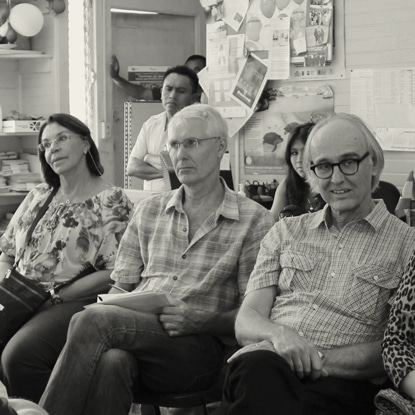What does the North American Free Trade Agreement have to do with drug policy? At first glance they might seem like unrelated topics. But as the Caravan4Peace makes its way across the southern United States, we in Canada have a chance to pause and reflect on how our policies might be making the effects of the war on drugs on the U.S./Mexico border that much worse.
Trade agreements like NAFTA are touted as the key to dynamic growth in nations like Mexico and Canada. But a policy brief from the Carnegie Endowment for International Peace suggests that agreements between trading partners don’t always realize such lofty goals, nor do they stand in for more multifaceted approaches to development.
In fact, Mexico’s reforms backed by NAFTA have been disappointing at best. At worst, these ‘reforms’ have contributed to making Mexico ideal for drug production and trafficking. Though trade has certainly increased, economic growth has been slow and job creation weak. Limited employment gains in manufacturing and services have been offset by large employment losses in agriculture. Needed wage increases, especially for unskilled labourers, have not materialized. What this means is that rural areas, farmers and the poor have been the least likely to reap the benefits of liberalized trade policies. Rural poverty runs at 55% overall with 25% living in extreme poverty, and Mexico remains one of the hemisphere’s most unequal countries.
So we have to ask, what does this continued impoverishment of the agriculture sector and small-scale farmers mean for drug control policies? Some small-scale farmers face tremendous challenges and live in conditions of poverty, social exclusion and government neglect. These conditions affect their decision to become involved in the illegal drug trade. In addition, lack of other economic opportunities, including fair wages and good quality employment, pushes poor people into the trade as small-time dealers and drug mules.
I’m not suggesting that NAFTA can be held fully accountable for the current situation on the U.S./Mexico border where violence has been widely reported in the media. To some extent, this violence has been precipitated by increased drug-related police activities. Mexican president Felipe Calderón declared a “war on drugs” upon assuming office in December 2006. Since then, there has been an unprecedented rise in crime and violence in the country, with over 47,000 people violently killed in the past 5 years. In 2008, for example, half the homicides in Mexico were directly linked to the drug trade. Though it might seem counter-intuitive to some, a systematic review of research of the impacts of drug-related law enforcement on drug-market violence found that increased drug-related law enforcement was associated with increasing levels of drug-market violence. Though the violence is often attributed to inter-cartel conflict, the police and the military have played at least some role in perpetrating this violence.[1] At the same time, U.S. funding through the Merida initiative has increased equipment and training supplied to Mexico’s police forces and Mexico has been cited for its human rights violations.[2]
What observers such as the Washington Office on Latin America have also noted is that the U.S.-led war on drugs has failed to suppress illicit drug production or trafficking, while harsh drug laws have led to human rights abuses, overcrowded prisons and threats to democratic institutions. Thousands of Mexicans have been killed, disappeared and displaced as a result of the drug war. But efforts to subject these drug control policies to scrutiny are hindered by claims that the drug trade is a threat to U.S. national security and trade relations.
The recent Summit of the Areas in Cartagena revealed the extent to which Latin America is a rising global power. Several leaders in Central and South America challenged U.S. economic and security policies. And groups like the Latin American Commission on Drugs and Democracy are challenging U.S. dominated prohibitionist policies. The Commission’s reports demand that both the U.S. and Canada examine their complicity in the drug trade as key drug-consuming nations.
Canada has recognized that the Americas are important partners in hemispheric relations. We designated Latin America as a foreign policy priority in 2007. But our record of action to-date has been narrowly focused on trade and securitization of the area. Securitization, including increased policing, border patrols, militarization of civil society, and suppression of dissent are central to the strategies of the war on drugs.
A quick visit to the website for Foreign Affairs and International Trade will link readers to press releases about Canada’s aid to Latin America to support security measures. Canada, through its aid programs, is a full partner in prohibitionist global drug control programs. Again, I’m not suggesting that we abandon efforts to bolster public safety, but it worries me that Canada has chosen to narrow its focus to security and trade agreements at the expense of more multifaceted and socially just approaches that foster development and social inclusion. I’m not alone. The Americas Policy Working Group at the Canadian Council for International Cooperation (CCIC) has raised some of the same concerns.
The CCIC invites Canadian policy makers to re-focus its policy priorities for nations like Mexico on a strategy that centres on human rights, broad-based participation in decision-making and development. Canadian approaches to aid and trade must address, not exacerbate, the root causes of drug and criminality problems in the Americas and recognize that militaristic approaches are detrimental to public safety.
So next time you hear someone touting the benefits of free trade, ask yourself: will these policies bolster democratic institutions, socially just development strategies and evidence and rights-based drug policies?









